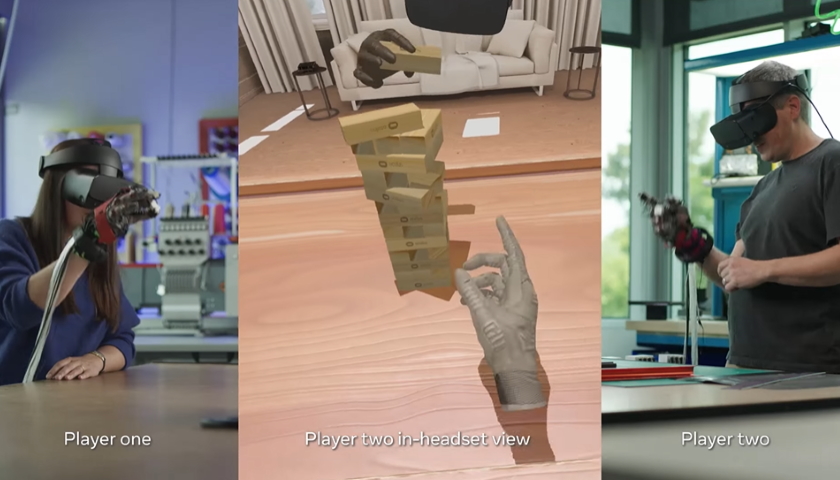This should excite those looking forward to an all-immersive metaverse experience, while also likely cooling expectations around when that next level experience will become a reality.
Today, Meta – the company formerly known as Facebook – has provided some new insight into its work on developing haptic gloves, which would enable you to feel and interact with virtual items in digital space.
As explained by Meta:
“Imagine working on a virtual 3D puzzle with a friend’s realistic 3D avatar. As you pick up a virtual puzzle piece from the table, your fingers automatically stop moving as you feel it within your grasp. You feel the sharpness of the cardboard’s edges and the smoothness of its surface as you hold it up for closer inspection, followed by a satisfying snap as you fit it into place.”
That’s an amazing advancement, but as you can see in this video, the reality of these being an affordable, accessible tool for regular consumers is still some time off. I mean, look at the mess of the cables connecting these prototypes.
How far off such elements might be is hard to say, but Meta says that it’s taken them seven years to get to this point, which has involved creating entirely new technological advances and elements to meet the project’s needs.
For example:
“To deliver a realistic sense of touch, a haptic glove needs hundreds of actuators (tiny motors) all over the hand, moving in concert in a way that makes the wearer feel like they’re touching a virtual object. But existing mechanical actuators create too much heat for such a glove to be worn comfortably all day. They’re also too big, rigid, expensive, and power-hungry to render realistic haptic sensations.”
Meta has had to develop new actuators to meet these needs, which not only adds technical complexity, but also cost. And when you consider that car door lock actuators cost around $200 each, you can probably get some scope as to how much it might cost to buy a working version of these gloves, with ‘hundreds’ of them attached to the hand surface.
So we’re still a way off picking these up down at the local Walmart and drifting off into virtual worlds. But they are coming, and they do point to a new, immersive future in the metaverse. But we’re not there just yet.
Which is where Facebook’s Meta name change may have sparked some confusion, with aspiring tech leaders and investors jumping onto anything that includes ‘metaverse’ in the description to ensure that they remain ahead of the curve, and on top of the next technological advance. Many missed out on social media when it first rose to prominence, dismissing it as a temporary fad, and they’re keen to avoid the same mistake. But right now, we’re not actually close to a functioning metaverse, as Meta and others envision, incorporating universal, co-created digital worlds accessible to all, and facilitating all new types of avatar-based interaction and engagement.
That gap between vision and reality could be behind the sudden hype around NFTs, which many see as a window to the next stage, where you can showcase digital art in virtual realms, and even build AR/VR avatars based on these animated character images.
For the vast majority, that’s not going to happen, while we don’t even have the schema requirements for a universal metaverse as yet, so no one knows what will be required to build 3D avatars and characters, and who’ll be hosting the digital realms where such characters could live.
But investors see profit. Somewhere. Maybe future digital art galleries will put a premium on these early NFT creations, and maybe the broader community around certain NFTs will lead into the next phase.
It’s all a little confusing right now, but as Meta’s experiments with haptic gloves show, while that future phase is coming, it’s still a way off, and there’s still a lot of development work to come before we can facilitate more immersive digital engagement, at least at the level people are discussing.
As Meta itself notes:
“Some of the technologies needed to deliver believable haptic experiences in virtual and augmented reality don’t exist yet.”
Such development can accelerate quickly, and even sneak up on you if you’re not paying attention. But it is worth noting the gap between where we are, and where we’ll be, and considering what that means for immediate term metaverse-related investment.
Source: socialmediatoday.com





